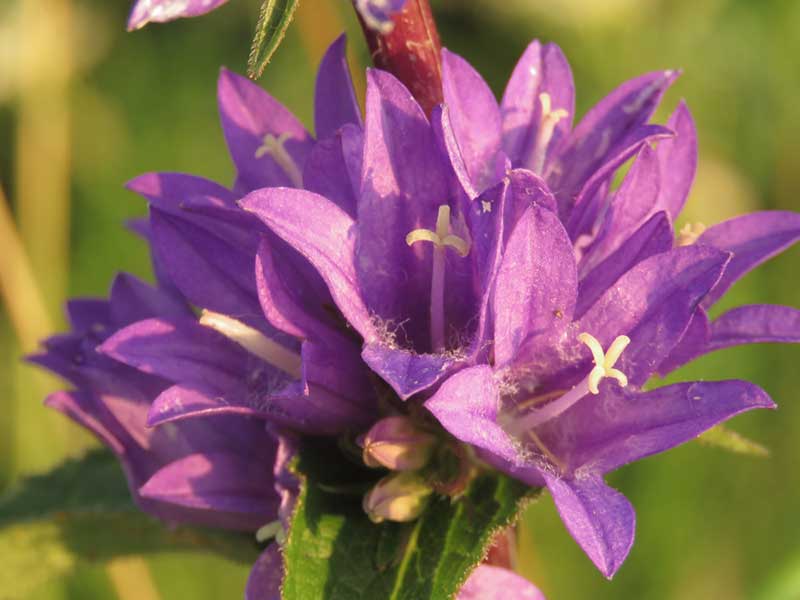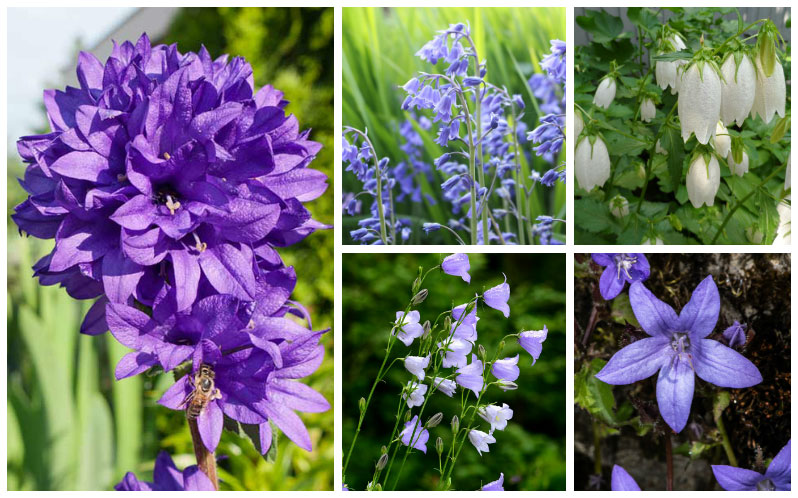
Named for their commonly bell-shaped blooms or saucer-shaped blooms, there are literally hundreds of types of bellflowers. They are most commonly seen in shades of blue and purple and are often used as ornamentals in the garden.
Gardeners love bellflowers due to their delicate look and the fact that they are typically very low maintenance to grow. They are originally woodland flowers that are typically native to North America, so they will thrive in moist soil and areas of full sun.
Although there are hundreds of types of bellflowers, we’ve put together a list of 10 truly stunning varieties of bellflowers that will thrive in most gardens with moderate climates.
1. Korean Bellflower
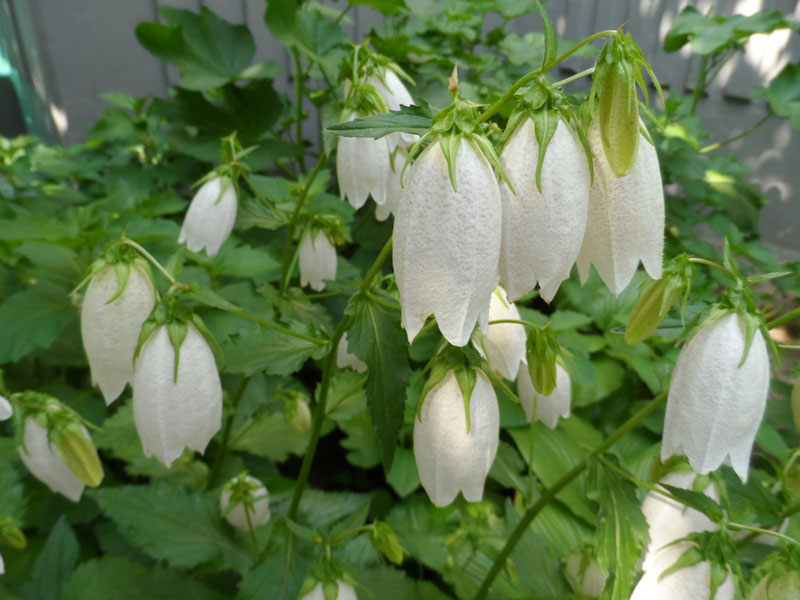
These bellflowers have blooms that are a stunning shade of deep, rich, royal purple. They have long, bell-shaped flowers that hang upside down in clusters from their stems. They have bright, green foliage that even increases the richness of the purple petals. They prefer to grow in full to partial sun in zones 3-8 and have a light perfume that is exceptionally pleasant. It is often called the “Elizabeth” bellflower and will bloom from early summer into early fall.
2. Adriatic Bellflower
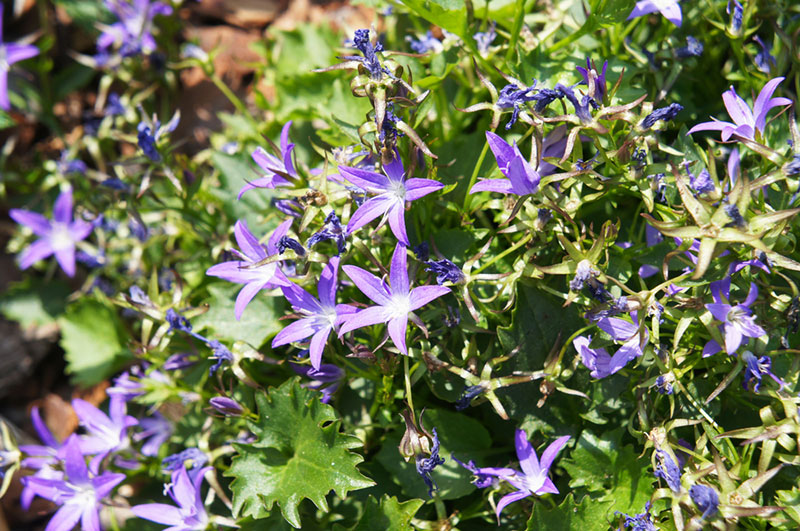
Also called “Dickinson’s Gold,” these bellflowers are known for their deep green foliage that produces tiny clusters of flowers that vary in color from blue to light lavender and have teeth-like petals. These little flowers pop out throughout the entire plant. This plant will grow in size rapidly, so it is best to plant them in an area where they have room to expand over time. This plant will grow best in zones 1-6 and can withstand a slight bit of frost. It makes an excellent addition to any border wall, as its tiny blue leaves will spill out nicely in a way that resembles a cottage garden.
3. Bluebell
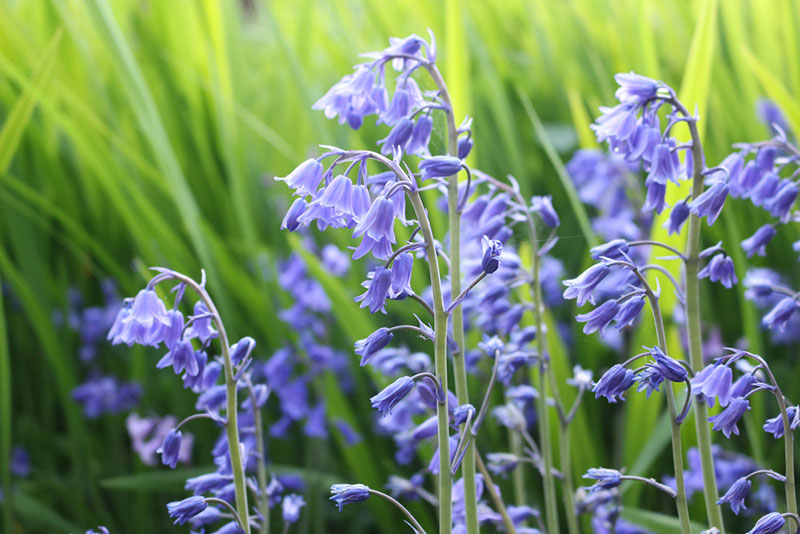
These spunky little flowers contain attractive, trumpet-shaped blooms that hang loosely from central foliage that grows around 2-3 feet in height. Their flowers are exceptionally delicate looking due to their slender design. Gardeners prize these summer-blooming flowers due to their tendency to sway gracefully in the summer breeze. Bluebells will grow well in most soils. However, they are originally a woodland plant, so adding some organic matter to the garden where they grow will help them bloom faster and last longer.
4. Peach-Leaved Bells
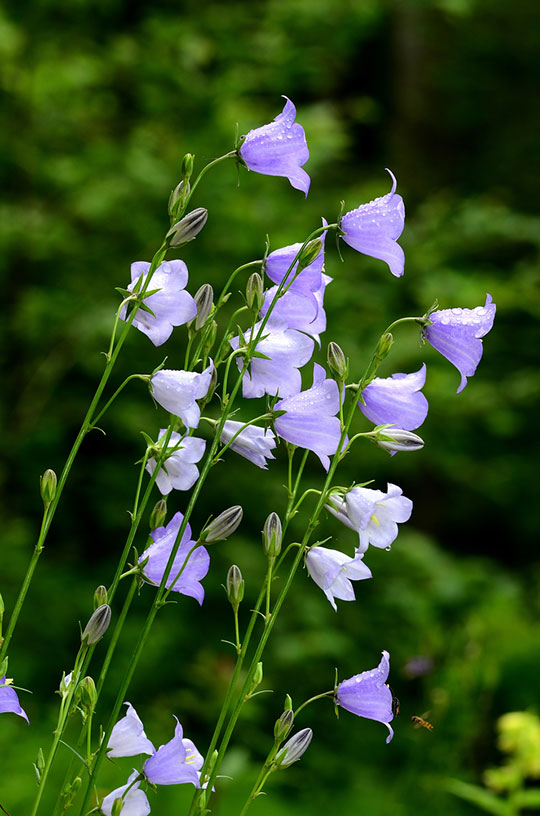
One of the most popular varieties of bellflowers, these flowers aren’t peach in color at all but range from white to a light purple. Also called the campanula persicifolia, they are prized by gardeners because they bloom nearly the entire year. They attract bumblebees and honeybees that help them pollinate and spread to other areas of the garden. There are two common varieties: “chettle charm” and “blue-eyed blonde.”
5. Serbian Bellflower
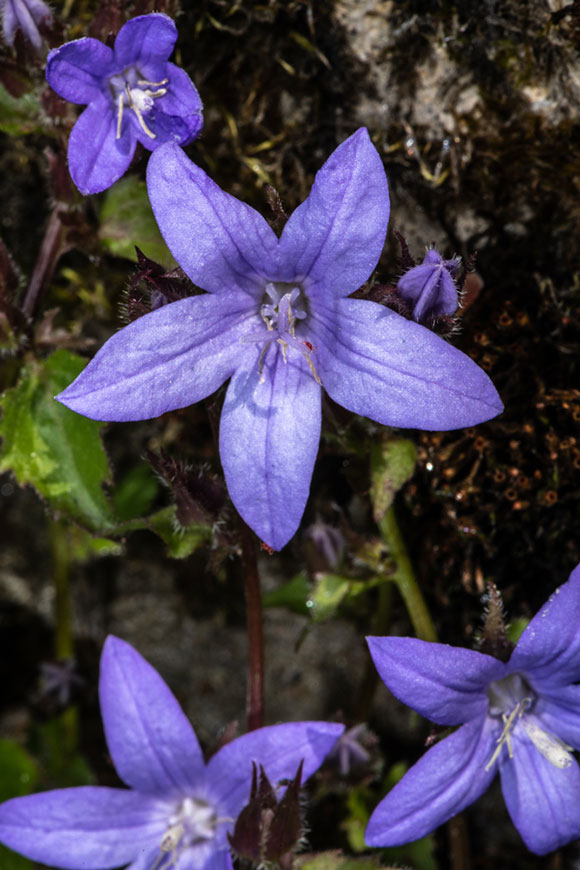
This flower is often called the blue waterfall because it produces a show-stopping amount of small, lavender blooms. Each flower is perfectly star-shaped and they will bloom from spring to early fall. Gardeners love the Serbian bellflower because it is exceptionally hardy and requires little to no maintenance, also resistant to deer and garden pests. They grow between 4-6 inches in height. It can be an invasive plant due to how quickly it spreads. Gardeners should continually cut this particular flower to keep its growth under control. Serbian bellflowers prefer either full sun or short periods of shade and grow best in warmer zones.
6. Dalmatian Bellflower
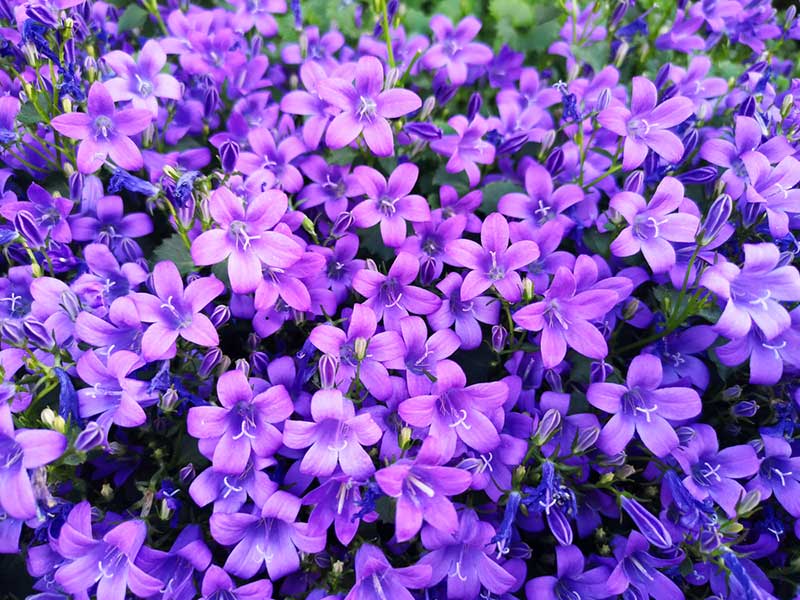
While many people think this flower is named for the breed of dog, it is actually named for the Southeastern Europe country of Croatia. This flower will stay green all through the colder season and will bloom best with continual trimming once the leaves begin to turn brown. These bellflowers grow best in zones 4-7 and will do best in full sun. They also prefer very moist soil and should be watered daily.
7. Canterbury Bells
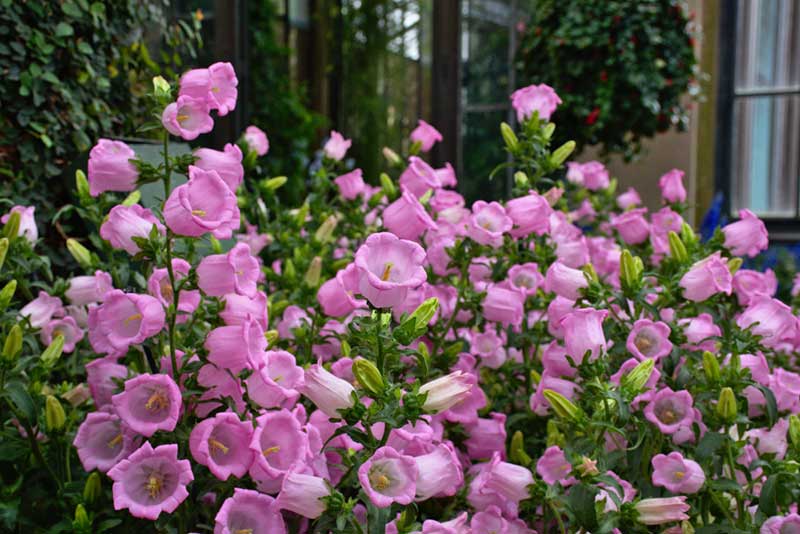
This flower is a true garden show-stopper. It has delicate clusters of pink, bell-shaped flowers that are exceptionally gorgeous in color. Canterbury bells are easy to grow and require little maintenance. They are adored by bees, butterflies, and hummingbirds. They grow from 12-19 inches and will grow best in zones 4-10. They prefer either full sun or partial shade and grow best in moist soil that is watered daily.
8. Carpathian Bellflower
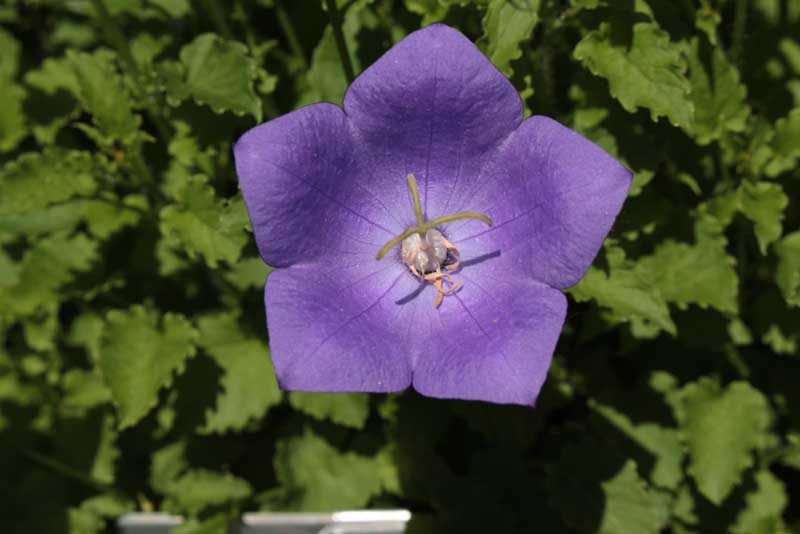
These lovely bellflowers come in shades of blue and purple. They take a long while before they begin to bloom, but they look stunning in a rock garden, border edge or a raised pot. They bloom in early spring for a few weeks, but they have a certain degree of elegance to their blooms. They grow well in moderate climates and prefer partial shade.
9. Campanula Lactiflora
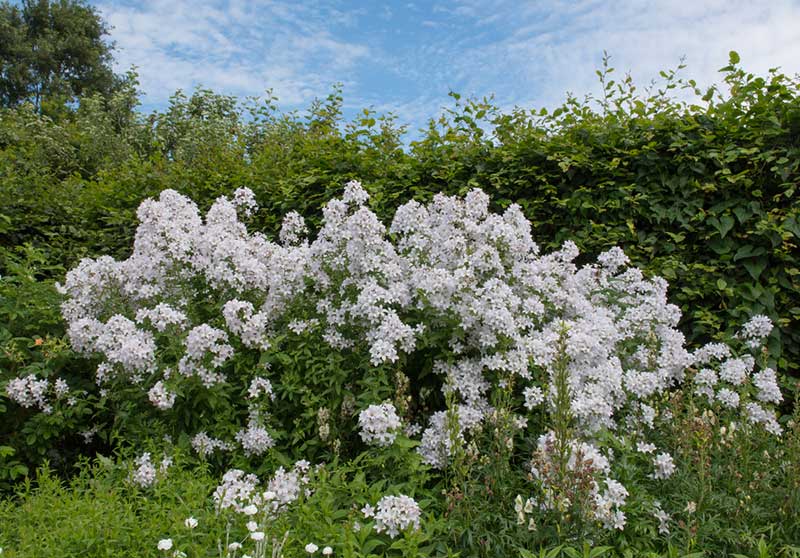
These milky bellflowers produce stately, star-shaped flowers that tend to be soft lavender in hue. They look excellent as a garden border or alongside a fence due to their rich shade of color and the fact that they have a sense of romance about their large clusters of bloom. They serve well to keep deer, rabbits, and other garden pests away for your garden, making them practical as well as lovely. They grow best in zones 5-8.
10. Clustered Bellflower
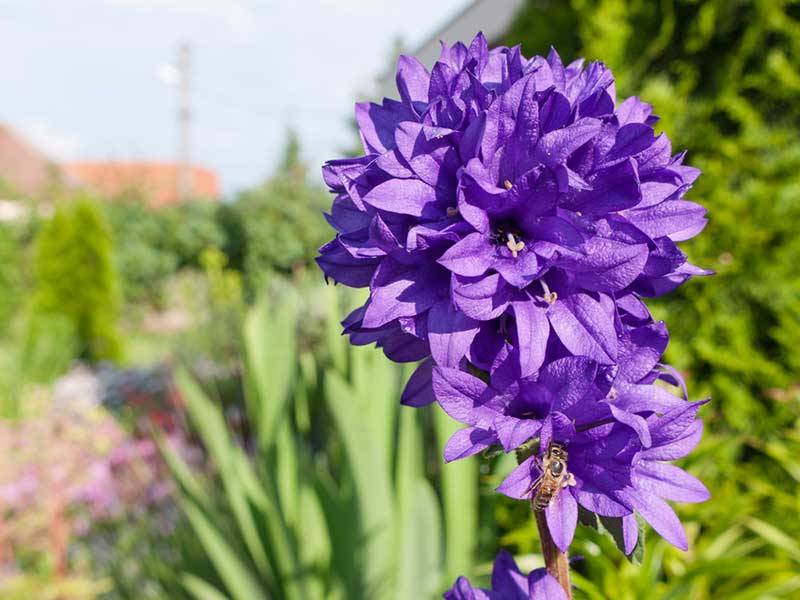
As the name implies, these flowers grow in small clusters of flowers that have bell-shaped blooms. They grow 6-24 inches in height. They prefer to grow in moist soil and will spread out quickly over a short period of time. They bloom in the late spring and will last only into early summer. However, they are truly stunning and worth planting them for the short period they do bloom.





